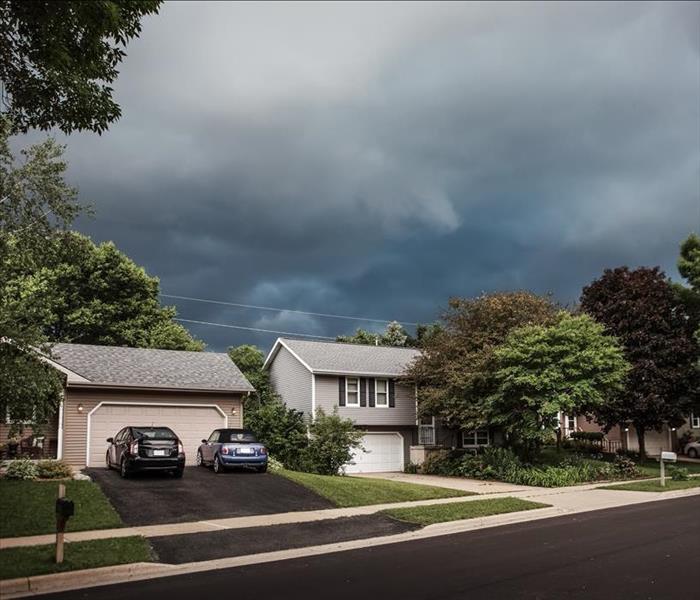Preparing Your Home for Water Damage in the Spring
4/21/2023 (Permalink)
April showers bring… water damage! Heavy rain and thunderstorms during the spring months can compromise the safety of your home. The excess rain and moisture in the air makes your home ripe for water damage. It is essential that you prepare accordingly to prevent catastrophic and costly water damage.
Follow these guidelines to effectively prepare your home:
- Inspect your property. Start with a broad inspection of your home and surrounding property. Carefully look at your roof, gutters, window wells, pipes, walls, foundation, etc. Make a list of items that need further inspection by a professional. In particular, look for the following signs of vulnerability in, on, and around your home:
- Damaged or missing shingles on your roof. Weakened or impaired roof singles provide a space for water to leak into your home.
- Clogged drains and gutters. These areas should be cleared of debris.
- Water stains or soft spots on walls or ceilings. Look for discolored, peeling, or bubbling paint. Other signs of water damage include brown spots and rings both inside and outside of your home.
- Inadequate sealing around windows, doors, and the respective frames. Sealant should be tight enough to prevent moisture from entering your home. Also, note any cracks or spaces around these vulnerable areas.
- Unsealed caulk throughout your home.
- Finally, inspect your property for any odd smells. Water damage and mold can emit a musty or damp smell.
- Know early warning signs of potential flooding. Do your roof and gutters land right beside the foundation of your home? Consider moving the gutter runoff to another location. If the runoff lands near the foundation of your home, you face a higher risk of flooding.
- Check your flood prevention systems. What good are faulty prevention systems??? Check things like sump pumps and other waterproofing systems to ensure they are in working order prior to the spring rainy season.
- Clean gutter and downspouts at least twice per year. This will keep water flowing off and away from your house.
- Treat your pipes well. Avoid pouring grease and other oil or fats down the drain.
- Know about your home’s shut off valves. Most importantly, identify the location of your home’s shut off valve and know how to turn off the water.
- Avoid making repairs on your own. It is not recommended that you DIY at home repairs to the foundation of your house. Bring in a specialist to handle the fundamental components of your home.
- Read through your home insurance policy.
- Have a plan in place for how you will address water damage to your home. No matter how diligent you are with prevention, sometimes water damage is inevitable. The first step to water damage restoration is assessment of the situation. The following factors impact how water damage restoration should be handled.
- Stop and assess the situation. The circumstances will vary greatly from homeowner to homeowner. Carefully look at your home and property.
- How much water is in or around your home? A minor amount of water damage may be handled independently. However, minor situations can rapidly escalate in severity if there is mold or other problems. Larger water damage restoration projects should be handled by an expert.
- Find the source of the water damage. Some varieties of water damage will be unsafe to clean on your own. For example, black water comes from sewers or other bodies of water and may contain very harmful bacteria. Always have a specialist handle black water damage restoration.
Springtime showers do not need to cause damage to your home. Be proactive in safeguarding your property. When in doubt, seek out a specialist. At SERVPRO of Wellington South we are here for all of your water damage needs. Call us today!

 24/7 Emergency Service
24/7 Emergency Service
